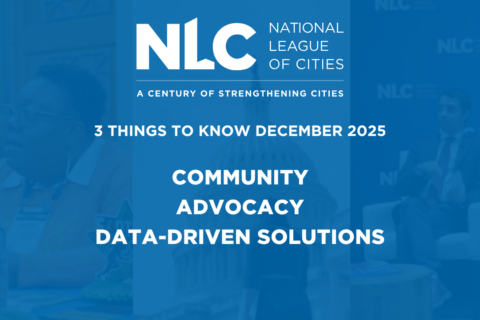To highlight ACS (American Community Survey) Awareness Month, the National League of Cities is spotlighting communities that have used ACS data to drive positive change in our From Data to Decisions series.
What is the American Community Survey?
The American Community Survey (ACS), conducted every year by the U.S. Census Bureau, collects detailed information about demographics, economics, housing and social characteristics of communities nationwide. Unlike the once-a-decade census, the ACS provides timely data that helps cities, towns and villages address pressing issues today while planning for the future.
Without the ACS, many communities would not have access to the accurate, up-to-date information they need to make smart, equitable decisions.
You can explore your own community’s ACS data at data.census.gov.
Apple Valley, Minnesota (Population: 56,374)
Data provided through the ACS is used by the City of Apple Valley, Minnesota in a variety of important ways. Income, employment and demographic data provided by the ACS is helpful in the preparation of the city’s annual financial report which is shared with the community. In addition, ACS data is used when the city needs to access financial markets through the issuance of tax-exempt bonds. The city prepares an “official statement,” which contains ACS-sourced demographic, income and labor force data, which is very helpful to potential investors interested in purchasing our municipal bonds.
Apple Valley recently underwent a credit evaluation by both Moody’s Investor Services and Standard & Poor’s (S&P) in preparation for a $32.45 million bond issue. Both rating agencies evaluated the strength of the community and its overall financial condition. Community data supplied by the ACS was an important part of the evaluation and Apple Valley received the highest bond ratings possible from both Moody’s Investor Services (“Aaa”) and S&P’s (“AAA”). Apple Valley is one of only 11 cities in Minnesota to have earned two triple-A bond ratings. This status allows the city to secure the lowest possible borrowing rates which directly saves residents money over the life of the bonds.
Oak Harbor, Washington (Population: 24,622)
Over the past two years, the City of Oak Harbor, Washington, has effectively used ACS data to communicate its community profile, including demographics, population trends, income and other key social indicators.
“By leveraging the ACS, we have been able to bring our community’s vision to life by securing vital resources such as a five-year U.S. Forest Service Urban and Community Forestry grant, as well as a county-wide Safe Streets & Roads for All grant.”
– Oak Harbor Mayor Ronnie Wright
The ACS data also supports city-wide planning initiatives, including the recently adopted Active Transportation Plan, Comprehensive Safety Action Plan and the current update to the city’s Comprehensive Plan “to ensure that our planning reflects the real needs of our residents,” said Mayor Wright. As a dynamic military community, the city relies on ACS data to guide everything from housing strategies to long-range planning, ensuring they’re building a safer, more connected and resilient Oak Harbor for all.
El Paso, Texas (Population: 678,815)
The City of El Paso relies on data from the U.S. Census Bureau’s American Community Survey (ACS) to guide community planning and development. This data, paired with other local datasets, helps City leaders make informed decisions to address transportation inequities and advance the City’s Vision Zero Action Plan.
“Census data is one of the most powerful tools we have to identify neighborhoods where residents face greater safety risks or have fewer transportation options,” said City Manager Dionne Mack. “By using this data, the City can prioritize investments that make El Paso safer and more accessible for everyone — from students walking to school to families visiting local parks.”
In 2024, the City completed a Safe Routes to Parks analysis to identify which parks most need infrastructure upgrades. By combining ACS household income data with mobility data, staff created a scoring tool that highlights areas where residents face the greatest barriers to safely accessing parks. The analysis revealed a strong connection between household income and injury risks in certain neighborhoods, underscoring the importance of socioeconomic data in shaping safety investments.
Similarly, the analysis, published through ArcGIS StoryMaps, helps make complex safety data accessible to the public and encourages community engagement — both critical components of Vision Zero planning. ACS data continues to play a vital role in prioritizing resources, improving safety and designing infrastructure that meets the needs of all El Paso residents.
Why the 2030 Census Matters for Cities
As NLC looks ahead to the 2030 Census, we are committed to preparing city leaders to support a complete and accurate count because every person counted means equitable funding, informed decision making and a stronger future for all. Get more information on what cities should know and can do.










